Is it time to buy a new carpet?
I know that feeling. It’s like you need a master’s degree to fully understand all the types of carpets, the different materials, the durability, the costs… What a headache!
But don’t worry! We’re here to help!
In Carpet and Rug World we teach you everything you need to know before you step into the store. It’s not as hard as it seems and you’ll save a lot of money if you know just a handful of things about carpeting.
In this post, we’re going to cover everything you must know about carpet padding (a.k.a. carpet cushion). And it’s almost as important as choosing your carpet. Maybe even more!
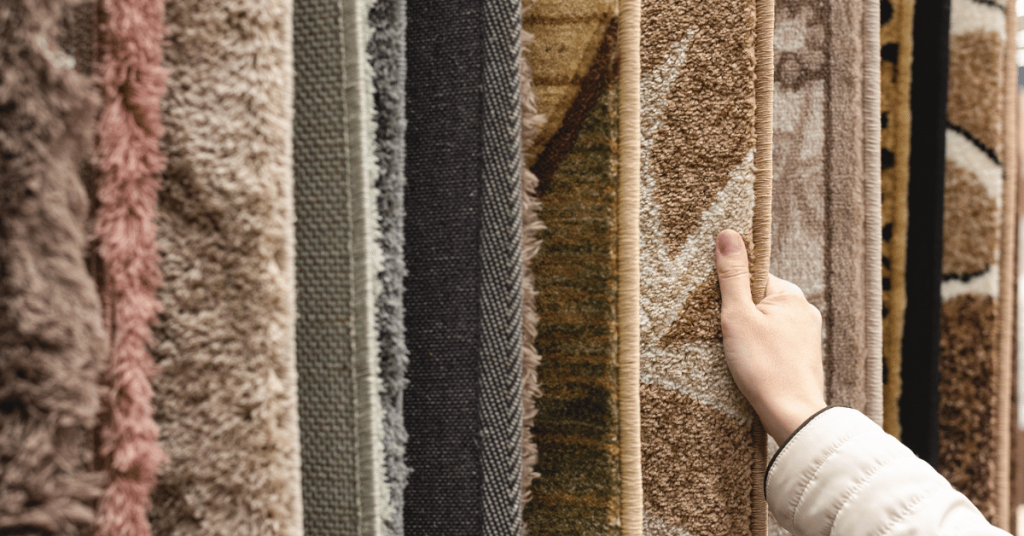
Let’s get started!
SHORT CUT
If you don’t really care about the different types of padding or understanding what any of the specific carpet terms mean, just go to the conclusion of the post. I’ll share with you my final recommendations there.
What is Carpet Padding and why is it so Important
What is Carpet Padding?
The first thing many people ask is what carpet padding is.
Carpet Padding is a flat piece of foamy material that’s specifically designed to be installed under your carpet for insulation, support, acoustics, comfort and durability reasons.
It’s easier to understand if you look at a picture:
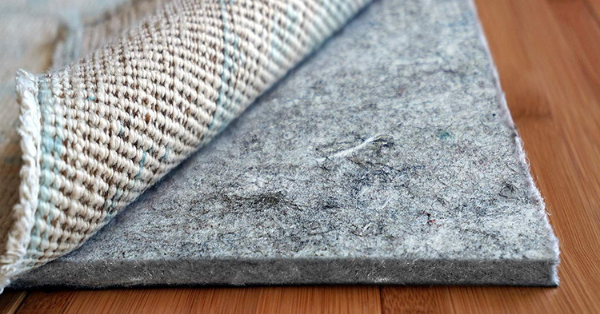
Why is it so important?
For a couple of reasons:
1. Because it can void your guarantee. If you recently bought a carpet, I’m 99.9999% sure that your carpet warranty comes with a couple of conditions. For example… did you know that you must have your carpet deep cleaned by a professional every certain amount of months if you want to maintain your warranty?
Well, you also need a certain carpet padding thickness in order to maintain the warranty. Most of the time it’s a 7/16″. But it can vary depending on the carpet mill that manufactured the carpet. Simply check your new carpet’s warranty to find out!
2. Because it will make your carpet last longer. When most people are about to buy a carpet they go to the store and look at the different colors, textures, thickness. After a while and careful consideration you chose the one they like the most (BTW, if you want to know more about the different places where you can buy a carpet with their pros and cons, we have a great guide about that here). Then the salesman will say something like:
– Ohh, you’ll also need carpet padding. But don’t worry, this one will do.
What you don’t realize then is that he just made a decision for you that can affect up to 50% the lifespan of your carpet (because wrinkles happen easier or because the padding flattens so much that the whole carpet becomes extremely uncomfortable). Or you could’ve overpaid a couple thousand dollars for a premium padding that you don’t even need.
3. Because it’s what makes your carpet comfortable. Many people think that the secret to having a comfortable carpet is how long the fibers are. As a matter of fact, we wrote a very detailed article on High vs Low Pile Carpets (or long vs short fiber carpets). But that’s not really the case. I would say that the padding accounts for almost 70% of a carpet’s coziness. So, it’s very important if you want to have control over how your carpet feels.
Think about it! The padding is what absorbs the impact of every step that you’ll take inside your house for many years. Having the right padding can have a huge impact on your fatigue (especially for the elderly or people with knee or hip injuries).
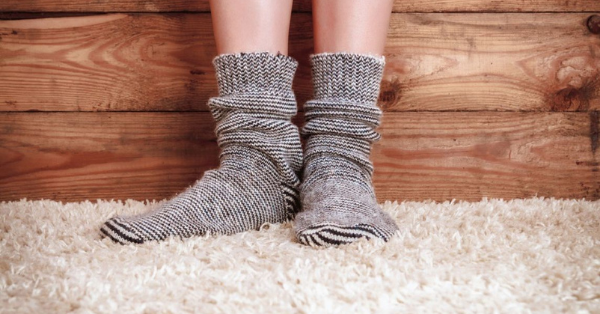
4. Because you need it. I mean… there’s no way around it. If you’re going to install a carpet, you’re going to need to install carpet padding. And your brand new carpet is going to sit on top of that padding for many years. It’s your carpets (and thus, your) support.
5. Because it improves Acoustics. Whether you own an apartment or a two-level house, the noise insulation that the padding provides is essential. If you’ve ever heard someone walking on the top floor before and after a carpet was installed, you know what I’m talking about.
The carpet padding accounts for over 85% (on average) of the carpet’s insulation. That means that without it, it would be like not having noise insulation at all.
6. Thermal insulation. I live in an extremely cold environment. When my neighbors (today they’re one of our greatest friends) moved in and came to our house for dinner they asked us why our house seemed warmer than theirs. We didn’t spend more money on heating, but our carpet was way better. So, the carpet retained our home’s heat a lot better than theirs did.
And that works for cold environments too! A good carpet padding prevents the cold air from escaping your home.
And both things can help you save a lot of money!
How much is carpet padding?
As you probably already know, carpet padding prices can vary a lot. We’ll look into the different padding specifications in a minute, but thicker and denser pads will tend to be more expensive.
On average $0.50 per square feet is a good estimate.
CAUTION!
BE CAREFUL WITH HOW MUCH PADDING YOU BUY
If you buy your carpet from a retailer, chances are you’ll buy the padding from that same retailer. Right? Be careful! Most retailers will try to charge you for the same number of square feet as they did for the padding. In reality, it doesn’t match perfectly because the padding can be cut into pieces. And thus, you’ll be able to use more of it. On average, 15% less square feet. And that’s a lot of money! So, try to talk to the retailer about this and try to buy only 85% of the carpet square feet that you’re buying. If they say no (which they probably will), use it as a negotiation tool on other things that might matter to you more!
Carpet Padding Specifications
The Carpet’s padding specifications are Carpet Padding Thickness, Carpet Padding Density, and Carpet Padding Materials. The combination of the three is what will tell you what the padding’s quality actually is. Let’s take a look at each of them separately.
MIGHT BE USEFUL
CARPET SPECIFICATIONS VS PADDING SPECIFICATIONS
In this post, we’re going to be talking about Padding specifications only. But if you haven’t heard about “Pile Height”, “Face-weight” and other carpet specifications, perhaps you should check our guide on Carpet (Pile) Specifications too. You’ll need to have read both that guide and this guide to make an informed buying decision.
– Carpet Padding Thickness
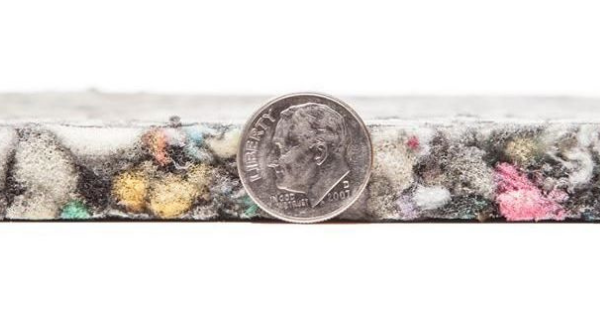
The first and better-known is Carpet Padding Thickness. Although some people refer to it as padding height.
The biggest mistake people make is to think that thicker is better. And that’s not always the case! In fact, if you chose padding that’s too thick, wrinkles can develop pretty quickly.
Most people want thick padding because they want it to be as cozy as possible. And when they find out that thicker isn’t always better, they always ask the same question:
So… how thick can it be?
As a rule of thumb 1/4″ to 3/8″ is the safety bracket. You could go thicker in living rooms and bedrooms (if that’s something you’d like and the manufacturer allows it), but you should not exceed the 7/16″. And as an exception to this rule… Looped Berber carpets (or low-grade commercial carpets) should not exceed 3/8″ ever because they’re very prone to wrinkling.
That being said… can you install thicker padding under any circumstance? Yes. You can go ahead and install it! Many people install 9/16″ on their bedrooms carpets (or add two thinner paddings together to achieve a similar effect). But if you do this, you must understand the consequences: you most likely be voiding the warranty and wrinkles will happen eventually. But if that’s something you’re willing to accept… it’s up to you. I wouldn’t recommend it.
– Carpet Padding Density
The second thing that we must take into account is the padding’s density. Also known as the padding’s weight.
Density is usually measured in pounds (although some manufacturers provide the information in ounces) and we can find 2 main types depending on how high or low the density is:
1. Low Density. These are the pads that have a density rating between 3 and 5 pounds. They’re usually found in apartments because it’s cheaper and they get replaced more often.
2. High Density. These are the pads that go from 5 to 10 pounds in density. Although the most typical ratings in residential areas area 6, 7 and 8 pounds.
The density does affect how the carpet feels when walking on it. 6-pound pads are softer underfoot and more comfortable overall. 9-pound pads are more steady and provide more support both your carpet and yourself. The 8-pound pads have a longer lifespan than the 6-pound pads, which is why they’re used more often in high traffic areas like stairs and hallways. The 7-pound pads sit in between the two.
If you want your carpet to last as long as possible, I would recommend going for the 8-pound pad. If coziness is what you’re after, the 6-pound choice is the clear winner. But keep in mind that 8-pound pads are more expensive than the 6 or 7-pound pads.
– Carpet Padding Materials
And last, but not least we have the different carpet padding materials. This is a very broad topic and people sometimes refer to it as “Carpet Padding Types”.
And that’s how we’re going to refer to the pad’s material on this guide. But keep in mind that it’s just the 3 pad specification and that’s not less nor more important than the previous 2.
Carpet Padding Types
Let’s take a look at the different types of padding based on their material:
1. Urethane Foam
This is a very inexpensive and lightweight pad. It’s also sometimes given away for free when you buy a carpet. That alone should be enough to tell you how bad it is.
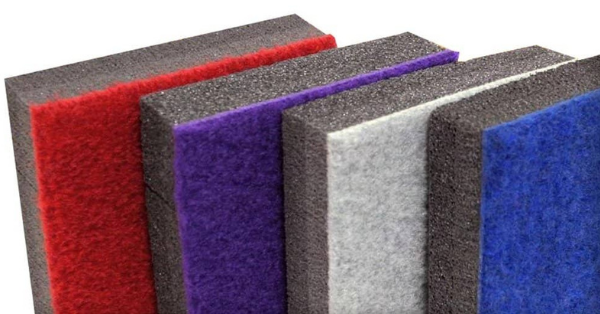
Runaway from it! It will be completely flat after 2 years max and you’ll feel the need to replace your carpet. It’s an ok option if you want to rent an apartment and want the carpet to have a lifespan of around 3 years. But I can’t recommend it in any other scenario.
2. Rebond Pad
Rebond pad is the most common residential padding solution and the best bang for your buck (according to every installer I’ve ever talked to). Up to 85% of the total carpet padding produced in the USA is Rebond (according to the Carpet Cushion Council).
And that’s amazing because it’s a recycled product! (Hence it’s name). It’s easy to tell the difference between a rebond pad and any other pad because since it’s made of recycled materials, rebond pads are multicolored.
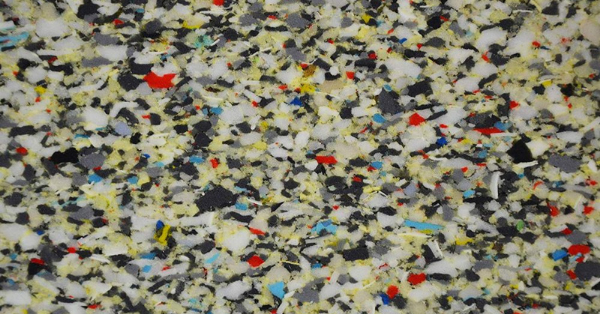
This color is just an example. There’re so many colors, it’s unbelievable!
One of the greatest things about rebond pads is that you can find it anywhere at almost every thickness and density. And it will do a very good job supporting your carpet. However! I wouldn’t recommend using it for very high-traffic commercial areas. Almost any other use is alright.
PRO TIP
PICK A PRICE THAT MATCHES YOUR CARPET
The Rebond Pad category is so extense, that you’ll see that there’s a lot of price difference between the different pads. If you don’t see the pricing difference, that may be simply because your retailer doesn’t offer many. The reason is that some of these are built with higher quality recycled materials than others. The price will range between $0.39 and $0.45 per square foot. Make sure that you pick a pad that matches your carpet’s quality. If your carpet is high quality, pick a high quality rebond pad. And so on.
3. Frothed Urethane
Don’t confuse Frothed Urethane with Urethane Foam! The manufacturing process is so different in fact, that Frothed Urethane is probably the most durable pad used today, while Urethane Foam is the least durable.
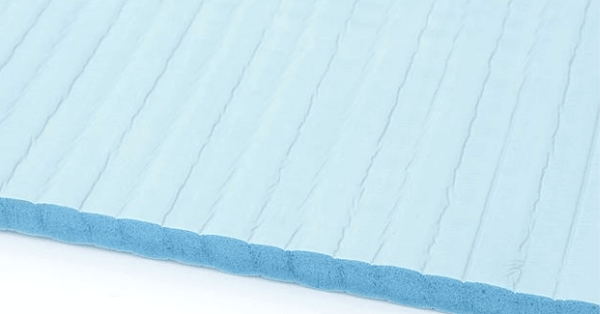
The reason why they’re so different is because of how they’re manufactured. Frothed foam is made by injecting gas while the foam is in a liquid state. This manufacturing process makes it so durable that it can last up to two high-quality carpet installations.
The only problem is… you guessed it! How expensive it is. So expensive in fact, that’s not even worth it. Other cheaper options can be just as good.
4. Waffle Rubber pad
The Waffle rubber pad receives its name because it literally looks like a waffle made of rubber. It really does!
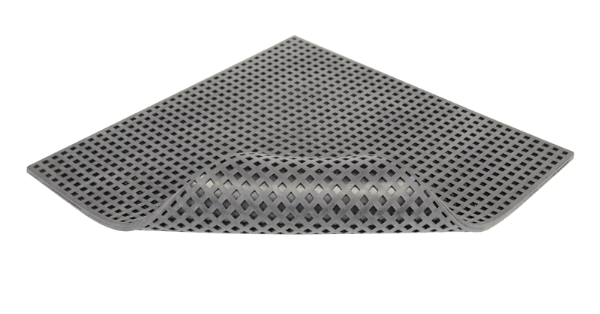
Its quality is very similar to the rebond pads, but it’s a little bit more expensive. Which is why not many people use it. And it’s not as durable as the frothed urethane, so there’s really no point in buying this pad if you have other options available.
Unless!
Unless you find an amazing deal and buying it is actually cheaper than buying the rebond padding. In that case, you should totally go for it. As I said… since not many people are installing this type of carpet padding, finding good deals is becoming easier.
5. Memory Rubber pad
Have you ever tried a memory foam pillow or mattress? This is basically the same thing but for your carpet. That means that it’s extremely comfortable and cozy.
This is a new type of carpet padding that’s becoming popular just now. It’s so new that we still don’t know how well it will hold up in the future.
What we do know is that it’s more expensive than the rebound padding, and it’s not eco-friendly. I wouldn’t recommend it because I don’t think that these pads will last that long. Not longer than the high-quality rebond pads at least.
If comfort is your one and only requirement and the price tag isn’t an issue, go for it.
6. Fiber Pads
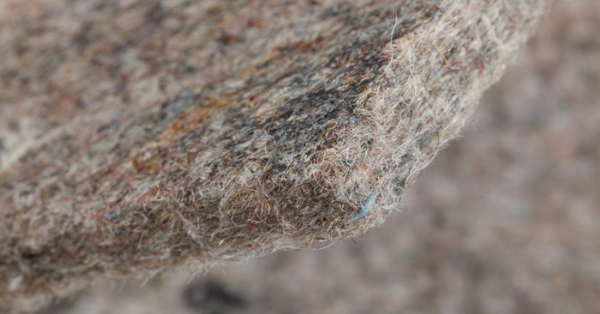
Although some people consider this to be a special pad I had to include the fiber pad in this list because it’s the number one choice when it comes to Berber carpet. It’s sometimes even mandatory if you want to maintain the warranty.
Unlike the other padding solutions, fiber pads are made of very dense fibers such as nylon, felt, polyester, etc. That makes them very durable, inexpensive and highly recommended for high-traffic commercial areas.
The downside? They’re very uncomfortable to walk on.
I would recommend this type of padding for looped carpet types and/or commercial carpeting. But that’s about it.
CAUTION!
If you are going to buy a fiber pad, make sure it’s made out of synthetic fibers. If not it could be prone to mold and that might be a big issue in the future.
7. Special Pads
We finally have to talk about specialized carpet pads. This is a huge category that includes carpet pads specially designed for certain tasks such as:
- Moisture Prevention Padding
- Odor removal padding
- Pet stain save padding
- Air filtering padding
- And so on!
Many salespeople may try to explain to you why these options are amazing and why they work so well. In my experience, these are all a bunch of lies. I haven’t ever seen any special pads do whatever they’re supposed to do in a way that justifies its price. I’m not saying they don’t work (because there are so many, it’s impossible to know them all). I’m saying that it’s probably not worth it.
Conclusion (TL;DR)
And that’s it! We’ve now covered everything you need to know about Carpet Padding (it’s thickness, density, and material).
If you’re still very confused about what type of carpet padding you should be buying, don’t worry! These are my final recommendations for an average budget:
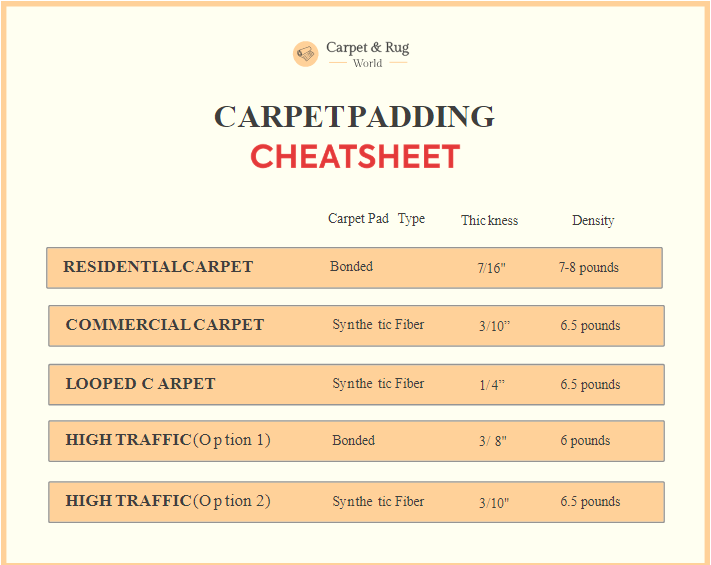
Please keep in mind that those are just my overall recommendations for the average carpet owner. Other carpet types such as frothed foam could work just as well (but for a lot more money).
I really hope you liked this guide! I put a lot of time and effort into writing it for you!
